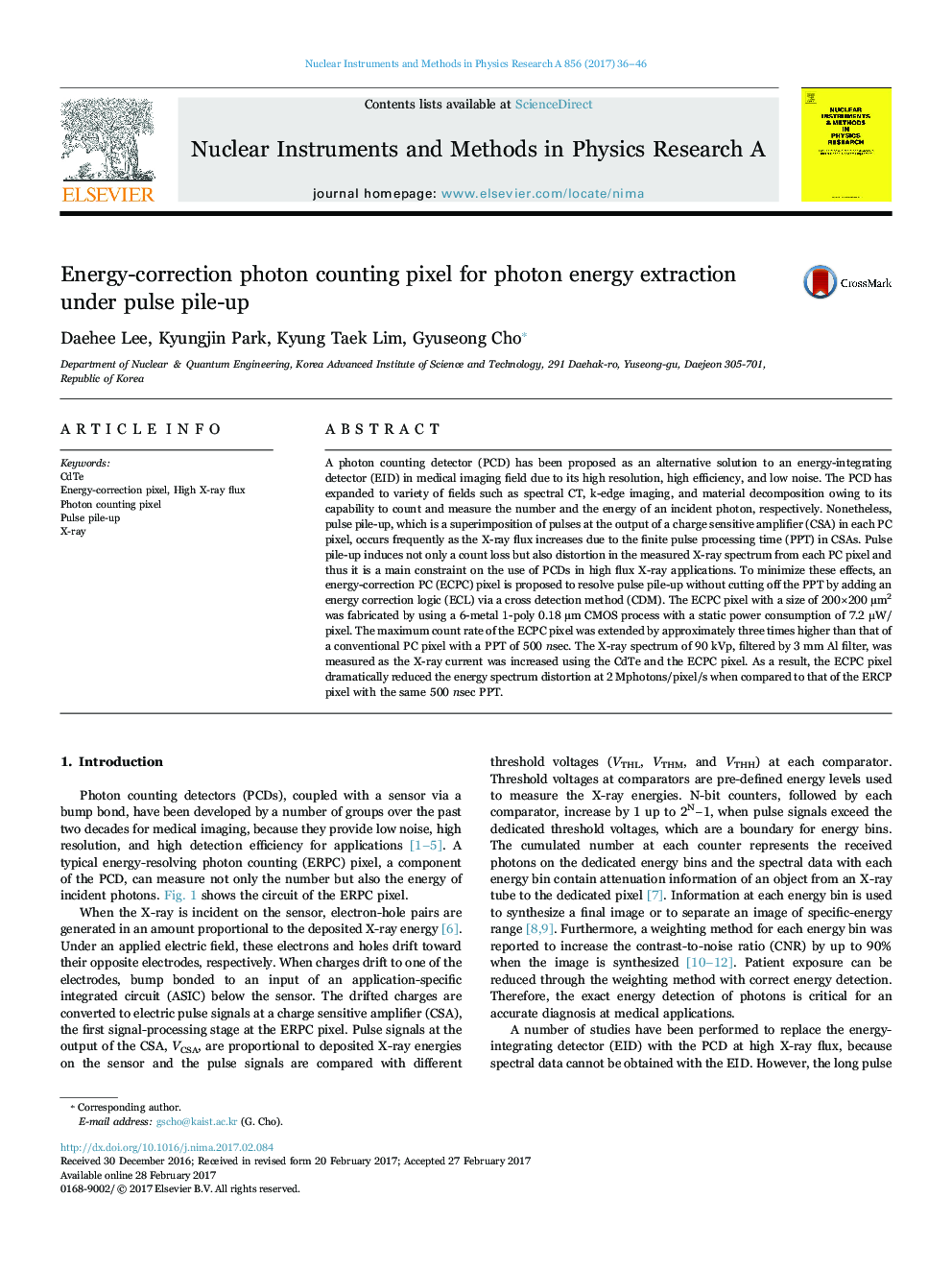| Article ID | Journal | Published Year | Pages | File Type |
|---|---|---|---|---|
| 5493067 | Nuclear Instruments and Methods in Physics Research Section A: Accelerators, Spectrometers, Detectors and Associated Equipment | 2017 | 11 Pages |
Abstract
A photon counting detector (PCD) has been proposed as an alternative solution to an energy-integrating detector (EID) in medical imaging field due to its high resolution, high efficiency, and low noise. The PCD has expanded to variety of fields such as spectral CT, k-edge imaging, and material decomposition owing to its capability to count and measure the number and the energy of an incident photon, respectively. Nonetheless, pulse pile-up, which is a superimposition of pulses at the output of a charge sensitive amplifier (CSA) in each PC pixel, occurs frequently as the X-ray flux increases due to the finite pulse processing time (PPT) in CSAs. Pulse pile-up induces not only a count loss but also distortion in the measured X-ray spectrum from each PC pixel and thus it is a main constraint on the use of PCDs in high flux X-ray applications. To minimize these effects, an energy-correction PC (ECPC) pixel is proposed to resolve pulse pile-up without cutting off the PPT by adding an energy correction logic (ECL) via a cross detection method (CDM). The ECPC pixel with a size of 200Ã200 µm2 was fabricated by using a 6-metal 1-poly 0.18 µm CMOS process with a static power consumption of 7.2 μW/pixel. The maximum count rate of the ECPC pixel was extended by approximately three times higher than that of a conventional PC pixel with a PPT of 500 nsec. The X-ray spectrum of 90 kVp, filtered by 3 mm Al filter, was measured as the X-ray current was increased using the CdTe and the ECPC pixel. As a result, the ECPC pixel dramatically reduced the energy spectrum distortion at 2 Mphotons/pixel/s when compared to that of the ERCP pixel with the same 500 nsec PPT.
Keywords
Related Topics
Physical Sciences and Engineering
Physics and Astronomy
Instrumentation
Authors
Daehee Lee, Kyungjin Park, Kyung Taek Lim, Gyuseong Cho,
